BACK TO LESSON PLANS
Quilt Around the World
Learning Statement:
Students will learn about a different country of their choosing and best represent the culture of this country using geometric and organic shapes out of different fabrics. Students will also learn basic stitching techniques as well as basics about quilt making.
Connecting to the Quilt Index:
In 2010, the Quilt Index received a collaborative planning grant from the Institute of Museum and Library Services to work toward internationalizing the Index. As of late 2010, around 175 quilts from 26 countries outside the United States appear on the Quilt Index, with many more to come.
In this lesson, the teacher will use the Quilt Index to research quiltmaking history and styles. In addition, students will search the Quilt Index for quilts made in the country of their choosing.
Specific quilts from the Index (see right) that teachers may wish to show in the classroom are:
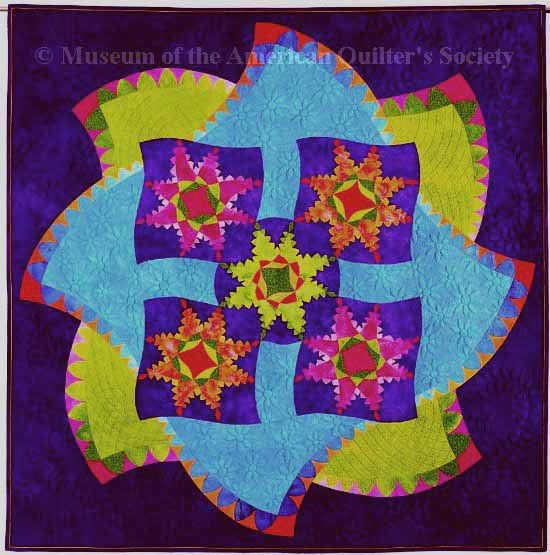
Pop Stars
Philippa Naylor
Saudi Arabia
2002
Collection of the National Quilt Museum acc.#2002.03.01
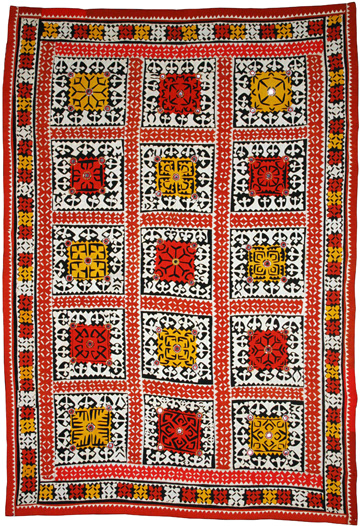
Badin Dowry Ralli
Maker unknown
Pakistan
1990
Collection of the Michigan State University Museum acc.#2008:121.8
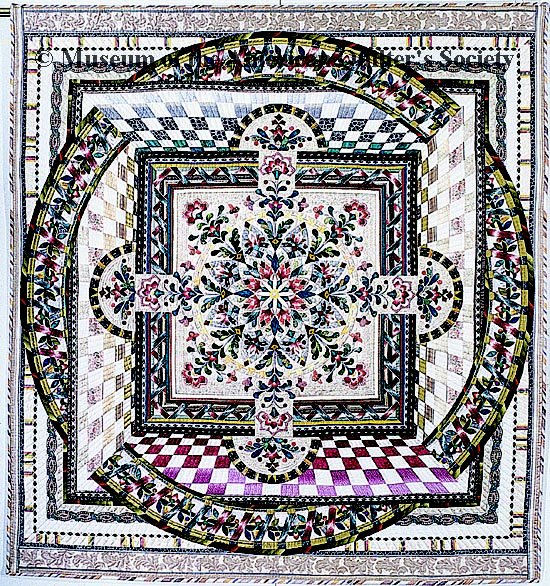
Mandala of Flowers
Noriko Masui
Japan
1996
Collection of the National Quilt Museum acc.#1998.04.01
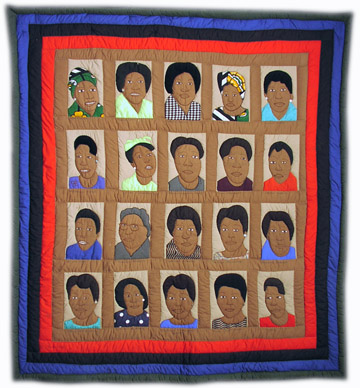
South African Black Women of the Anti Apartheid Struggle
Fina Nkosi
South Africa
2004
Collection of the Michigan State University Museum acc.#2004:134.1

Petrol Queue
Harare Patchwork and Quilting Guild
Zimbabwe
2005
Collection of the Michigan State University Museum acc.#2008:168.3
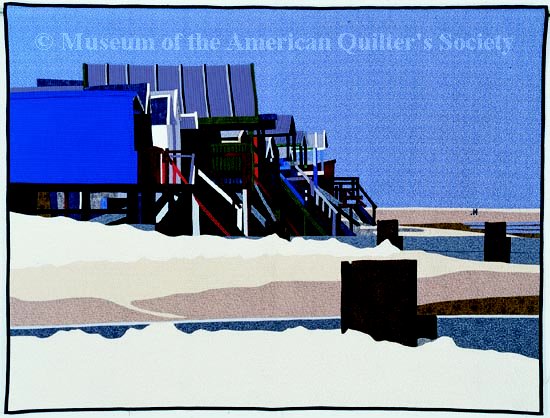
It’s Not Summer Yet
Inge Mardal
France
2001
Collection of the National Quilt Museum acc.#2001.13.01
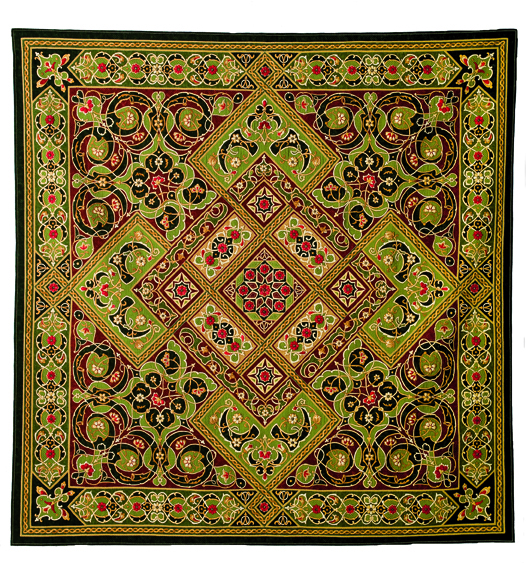
Renaissance Revival
Mariya Waters
Australia
2007
Collection of the National Quilt Museum acc.#2009.01.01
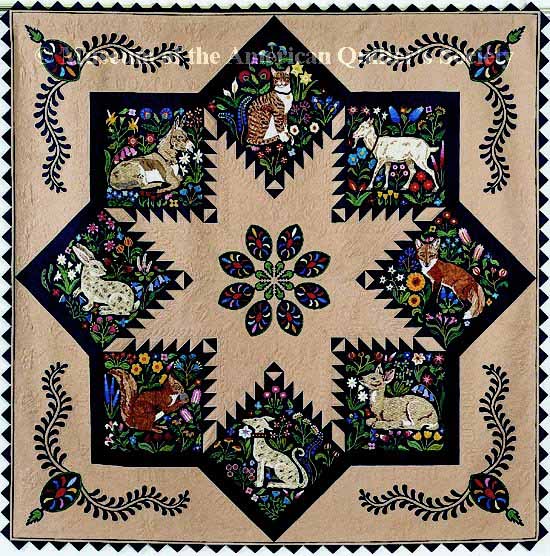
Goato and Friends
Barbara Barber
United Kingdom
1995
Collection of the National Quilt Museum acc.#1996.02.01
Context Background:
Teacher will demonstrate different stitching techniques and show different videos on quilt making. Students will select a country of their choosing from the world map, research it, and best represent what they have learned into a quilt block design using different shapes and fabrics.
Materials (for 25 students):
• Sewing Needles
• Scissors
• Floss or string
• Miscellaneous Fabric Squares
• Miscellaneous Embellishments (buttons, ribbons, etc.)
Process (Day 1):
Preparation of Activity: Teacher will show slideshow presentation on basics about quilt making, covering topics such as: styles, history, famous quilt makers today, and examples of different quilts. The Quilt Index should be used as a source for most or all of this information.
• Students will then be introduced to the assignment, Quilt Around the World.
• Students will pick a country they would like to research from world map.
Artistic Production: Students will begin researching about the specific country in the computer lab and fill out worksheet. Students should search the Quilt Index for quilts made in their chosen country for inspiration.
Clean Up: Students should log off their computers and turn in worksheet.
Process (Day 2):
Set Up/Prep Time: Review worksheets for credit.
Preparation of Activity: Teacher will demonstrate stitching techniques used in quilt making.
• All students will follow demonstration step by step and complete the “stitching worksheet.” Artistic Production: Students will sketch out five different ideas for their 12”x12” blocks.
• If idea/sketches are turned in and approved, students may begin working on their block. Clean Up: All materials put away, floors cleared of any debris, counters and tabletops wiped clean, and projects stored in a safe area of classroom.
• Stitching Worksheet turned in for credit.
• Five block sketches turned in for credit.
Process (Day 3):
Artistic Production: Full workday.
• Students should be cutting fabric shapes.
• Students should be stitching fabric together to complete their block.
• Early finishers can embellish their blocks. Clean Up: All materials put away (either trashed, recycled, or saved for later use), floors swept, tabletops and counters wiped clean, all projects turned in for grading.
Subject: Art
-
Museum
National Quilt Museum -
Museum
Michigan State University Museum Michigan Quilt Project
-
Documentation Project
Quilts and Human Rights Michigan State University
-
Documentation Project
South Africa Quilt History Project Michigan State University
-
2002
Pop Stars Naylor, Philippa
-
1976-1999
Badin Dowry Ralli... -
1996
Mandala of Flower... Masui, Noriko
-
2000-2025
Anti-Apartheid Po... Nkosi, Fina
-
c2005
Petrol Queue Harare Patchwork an...
-
2001
It's Not Summer Y... Mardal, Inge
-
2007
Renaissance Reviv... Waters, Mariya
-
1995
Goato and Friends... Barber, Barbara
Load More